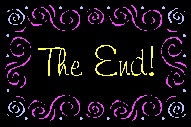Karina Teaches – Lesson 4
Over this year, Karina is going to share some of her writing seminars on the blog, with the lessons and references for further study. We’ll be posting these once a month. There’s no assigned homework, but if you have questions, please ask them in the comments. Her first workshop is worldbuilding. This is Lesson 4. Here are the links to Lesson 1, Lesson 2, and Lesson 3.
Worldbuilding 101, Lesson 4: Your People
On the last day, God created Man (male and female), but we’re going to do it on Lesson 4.
For some of you, this won’t be too hard–you’ll have basic humanoids with some special quirk that makes them unique.
As you’ve already heard me say–and everybody join in this time–you need to think about the impact of the differences you make on the rest of your world. For example, for my novel Discovery, my husband Rob and I have postulated a race of creatures that are more patterned after starfish–radial symmetry rather than the vertical symmetry of humans. This introduced a whole slew of interesting questions:
–Do they have a sense of right/left/forward/back?
–Are certain digits devoted to walking and some to handling tools? Or are they ambidextrous?
–Where are their eyes? How do they see?
–How do they eat, sleep, procreate?
–What would their homes, vehicles, and equipment look like?
Fortunately for Rob and me, we will be dealing with humans exploring a long-dead spaceship, possibly abandoned, so we have some wiggle room for unanswered questions. We could concentrate just on the things that directly apply to the space ship, its design and especially its life craft. If we take our humans to this planet in another book, we’ll need more answers!
Even if you’re doing fantasy and are going to use some of the time-honored “aliens” like vampires, werewolves, etc., you still need to decide their biology, needs and how they are different. Is vampirism a disease, a genetic defect or a choice? Why can’t they come out into the sun? How does it really affect them–sunburn, allergic reaction or the good ol’ burst into flames? Do werewolves have to change in a full moon, or can they only change in the full moon? What happens to their clothes?
I’ve had a lot of fun playing with the usual clichés of fairy creatures in my Dragon Eye, PI universe. (www.dragoneyepi.net). For example, my elves are very long-lived. Well, when you live to be 500-600, your biology should slow down a bit, and so does your sense of time. Thus, while elves are able to interact with humans, they are also infuriatingly slow. Their language, for example, is full of prerequisites–to apologize for bumping into someone requires you recognize their social status and that of their family and tribe as compared to yours, the nature of the offense, the impact of that offense on the relationship and the relationship of their people… As my dragon detective Vern likes to complain, “It can take them half an hour to ask where the bathroom is.” (And, thanks to their changed biology, they do have half an hour before the need is urgent.)
Keep in mind, too, that the more that quirk is part of their nature, the more effect it will have on their civilization–but that’s lesson 5.
For more reading:
http://www.amazon.com/Essential-Guide-Alien-Species-Star/dp/0345442202/ref=sr_1_1/104-5069618-1512745?ie=UTF8&s=books&qid=1189371773&sr=1-1 The Essential Guide to Aliens (Star Wars) by Ann Lewis and RK Post. It’s amazing what people have come up with for creatures. Contains their history, biology and sociology. Great for ideas.
Dragon Magazine: Although out of print, each issue had a bestiary with incredible detail about certain kinds of creatures.
Dungeons and Dragons Players Handbooks or Monster Manuals: Pick a fantasy creature and these writers have thought of everything from how they react in an adventure to what they wear as pajamas. Forget the dice and the stats and just play with the ideas.
Real life creatures: Google a species that may have traits you want – like starfish or manta rays or birds. Even if you aren’t looking for a full creature, you might learn something. For example, if your alien has wings and can fly, you will want to study what else is involved – do they have feathers or skin like a bat? Do they fly or just soar like a flying squirrel? How does their anatomy support the wing structure?










